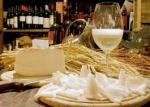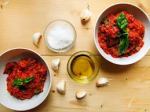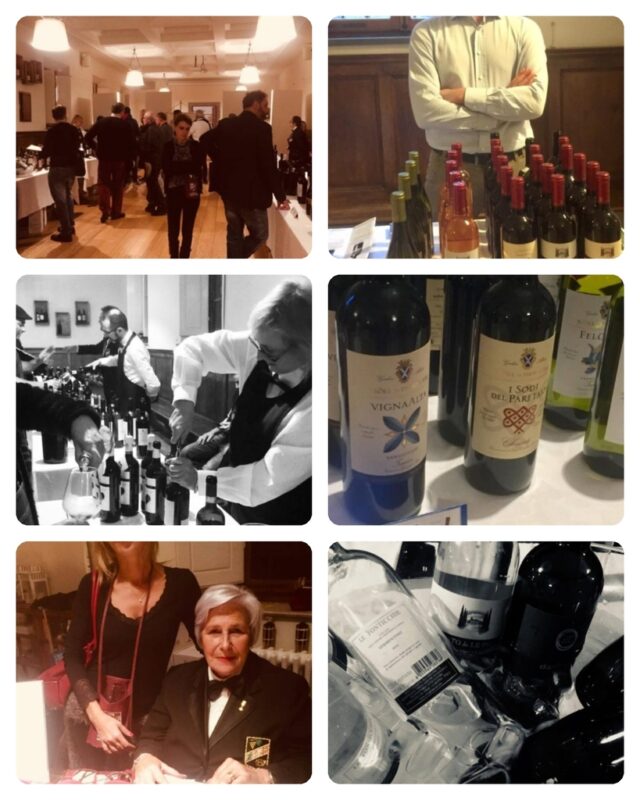“Pisa, o Pisa, per la fluviale , melodia che fa sì dolce il tuo riposo , ti loderò come colui che vide , immemore del suo male , fluirti il cuore , il sangue dell’aurore , e la fiamma dei vespri , e il pianto delle stelle adamantino , e il filtro della luna oblivioso“
Beyond the “Leaning Tower” !
Pisa is a city in Tuscany, central Italy, on the right bank of the mouth of the River Arno on the Tyrrhenian sea. Although Pisa is known worldwide for its “Leaning tower” (the “Bell Tower of the City’s Cathedral”) , it contains more than 20 other historic churches, several palaces and various bridges across the River Arno . Pisa and its architecture of was financed from its history as one of the Italian “Maritime Republics”.
Pisa is also home of the University of Pisa, which has a history going back to the 12th century and also has the mythic Napoleonic “Scuola Normale Superiore di Pisa” and “Sant’Anna School of Advanced Studies” as the best sanctioned “Superior Graduate Schools in Italy”. Read this post about Pisa to know what to do in this amazing city of Tuscany!
Top 10 things to do
When Pisa is mentioned, everybody thinks about its tower, but this impressive “Leaning Bell Tower” it’s just one of the many monuments you can find in this nice Tuscan city. The beautiful “Piazza del Duomo” collects, in a unique architectural complex in the world, the so called “Campo dei Miracoli“ (“Miracles Square”), the main religious monuments of the city:
- The “Tower of the Cathedral”;
- The “Baptistery” ;
- The “Campo Santo” (the “Graveyard”).
Pisa, however, it’s not just about this square: it will be enough to move just a little to discover the artistic beauty that make Pisa one of the most beautiful cities in Italy. Buildings, monuments and museums keep alive the memory of a past time during which Pisa was the “Maritime Republic” and, for a long time, the undisputed master of the Mediterranean sea .
1 The “Leaning Tower”
Symbol of the city, thanks to its characteristic slope, this tower is the most famous monument of “Piazza del Duomo” and it was built between the XII and the XIV century. The “Leaning Tower of Pisa” leans because the ground gave during its early stage of construction, and since then it has remained in this way.
The tower will never fall down!
Even if it could looks scaring, you don’t have to worry about it: the vertical axis, passing through its centre of gravity, falls into the support base, so the tower will never fall down, unless the laws of physics should be subverted.
We don’t have certain information about who built this tower, maybe it was the architect Diotisalvi, who in that period was working at the Baptistery. But even if there are several analogies between the two monuments the diatribe about the paternity of the tower is still open.
2 The “Cathedral of Santa Maria Assunta”
The “Cathedral of Pisa”, dedicated to Santa Maria Assunta, is the most significant example of the Pisa Romanesque Art. The architect Buscheto joined the classical tradition with elements from the Norman, Byzantine, Pre-Christian and Arabic Arts, creating a new style which anticipated the Florentine Renaissance. It testifies the prestige that the “Maritime Republic of Pisa” reached in its moment of maximum power.
The revenge against Venice
Its construction began in 1604, in the same date of the beginning of the works of the “Basilica of San Marco” in Venice. Probably it was risen a sort of silent competition between the two Republics for who was able to build the most beautiful and sumptuous worship place.
The current aspect of the the Cathedral of Pisa is the result of continues restauration works made in different epochs. During the IX century some of the statues has been substituted with copies, the originals are now in the “Museum of Opera del Duomo of Pisa”.
3 The “Baptistery”
The “Pisa Baptistery“ too forms the monumental complex of “Piazza del Duomo” . Its construction began in 1153 thanks to the architect Diotisalvi, as an inscription inside an interior pillar testifies, but a lot of the sculptures on the façade have been made by Nicola Pisano and his son Giovanni.
The great Nicola Pisano
4 The monumental “Graveyard “
The last wonder of “Piazza del Duomo” is the monumental “Graveyard of Pisa“, a sacred place. The crusaders brought there the saint-ground taken on the Golgotha mountain, just outside Jerusalem.
There are buried the most important people of Pisa, and there can be found art works from the Etruscan time passing through the Roman and Medieval era until the last century. Simple white marble walls guards the graves; the most important persons were buried into the garden or in the Roman sarcophagi, while the other were buried under the arcades.
The “Graveyard of Pisa” in the XIX century
In the XIX century “Graveyard of Pisa”, was restructured, the sarcophagi was moved under the arcades to protect them, so currently everything is under them. The mix between celebration of the history and the death made this “Graveyard of Pisa”, one of the most visited place during 1800 until the second world war bombardments caused serious damages to the frescoes. In 1945 started the renovation works and they are still in progress.
5 Banks of the Arno
Pisa is also known for its Banks of the Arno: all the streets that go along the Arno are an important point of meeting for young people and reference’s point for the tourists.
There are important buildings, dated back to the Middle Age, that during the centuries have been transformed. Towers, bridges and buildings, in spite of their actual Renaissance appearance, have a medieval soul, which can’t be ignored by the eye of an attentive tourist.
What to see in the banks of Arno
Among the great number of the banks of the Arno, the most famous is the Medicean one which hosts a great number of historical buildings, such as:
The beautiful church of “Santa Maria della Spina”
On the bank of the “Arno Gambacorti” there’s a small gothic jewel, the church of “Santa Maria della Spina”. It took this name in 1333 when it hosted the relic of a spur from Christ’s Crown (now exposed in the church of “Santa Chiara”).
If you are in Pisa on 16th June, you cannot miss the illustrations of San Ranieri: the backs of the Arno are illuminated by candle lights enhancing the outlines of all buildings and creating a play of light and colors.
“Piazza dei Cavalieri” –“Knights Square”
“Piazza dei Cavalieri” owes its name to the presence of the headquarter of the “Order of Knights of St. Stephen”. For centuries it has been the site of a national civil power, even though today it’s above all a cultural and study place thanks to the presence of the:
In 1989, passing through Pisa, Keith Haring left to the city an extraordinary work of art:
- The mural “Tuttomondo”: It was painted on the rear façade of the convent of the friars “Servi di Maria”of the “Church of St. Anthony”.
The “Church of St. Anthony”
The “Church of St. Anthony”.is located close to the station, in an urban context in which the artist used to expressed itself at the best. A few months later Haring would die and this mural is one of his last works. He had this idea in New York after a casual meeting with a Pisa student with whom he talked about world peace.
What about “Tuttomondo”?
The characters inside the murals are 30, stuck like a puzzle, and each one represents one aspect of a world in peace: there are “humanized” scissors defeating the evil serpent that was eating the head of the another figure.
Then there is motherhood, represented by the woman with the baby in her arms, the nature with the two men supporting the dolphin and so on. Haring used soft colors, as a form of respect for the beauty of Pisa.
He worked on it for a week, with the intention of making a permanent work, in fact, he used the colors specially made by craftsmen of the Caparol Center, tempera and acrylic that could keep intact the quality of color for a long time. After 20 years “Tuttomondo” is still there to remind us the brief and intense life of this extraordinary artist.
The city center
If you pass through the old town centre of Pisa probably you’ll pass through the “Narrow Borgo” (“burg”), or “the Borgo” as people of Pisa use to call it. It’s the most typical street of the center, with its colonnades, the shops, the café. Along the way you can see buildings of the XIV and XV centuries that formed the nucleus of the ancient Pisa: here the noble families and merchants competed to build the most beautiful, the tallest and colourful building.
All that beauty can be seen so much today. Going along “Via delle Colonne” you can arrive in “Piazza Vettovaglie”, secular place of the food market, originally “Piazza dei Porci”. Once the arcades of “Narrow Borgo” are finished there is “Piazza del Pozzetto”.
Marina di Pisa and its harbour
Marina di Pisa and its tourist harbour (also called simply “Marina”) is a seaside town located just 12 km from Pisa and, unlikely the majority of the Tuscan cities, its foundation is rather recent. In 1606, Ferdinando I de’ Medici, Grand Duke of Tuscany from 1587 to 1609, decided to reclaim the area by moving the River Arno mouth as he believed that the south-west wind could block the normal flow of the Arno River, increasing the risk of flooding in Pisa.
On the left bank there was an hexagonal building surrounded by a moat, called “the Fort“, which was the custom for the river traffic. Probably the first houses of fishermen were built around this structure, but the official foundation of the town dates back to 1872, when the municipality of Pisa drew up a plan of a grid-pattern town divided by three squares connected to Pisa by a major road, currently known as “D’Annunzio Avenue” (Viale d’Annunzio).
The first railway from Pisa to Marina di Pisa
On June 23, 1892 a steam railway line from Pisa to Marina di Pisa was inaugurated (later replaced by an electric one, no longer working as well), which contributed to its rapid growth as a tourist destination.
The first restaurants were built in this area, as well as beach resorts and inns. Also many beautiful Art Nouveau and Neo-Medieval Villas were built there, therefore many celebrities chose to buy a house in this new coastal town.
Gabriele D’Annunzio and Pisa
Gabriele D’Annunzio, a famous Italian writer, poet and journalist, brought an house here and Marina di Pisa has been a source and inspiration of many of his poems.
Marina di Pisa is a renowned destination for summer tourism, offering many accommodation facilities. Beaches are both sandy or with pebbles, and along the coast there are many bathing facilities and restaurants. In 2013, the “harbour of Pisa” was inaugurated just 10 minutes away from the city and its famous “Leaning Tower” and its international “Airport, Galileo Galilei”.
“San Rossore”, the green ara of Pisa
It is located in the center of the most extensive nature reserve of Tuscany, the “Natural Park of Migliarino”, “San Rossore” and Massaciuccoli, which covers about 24,000 hectares, ensuring that the view from the sea of dune plants is quite unique.
The harbour has 354 seats and has been designed to be entirely walkable thus you can walk admiring the sea, the mouth of the Arno, the Apuan Alps and the port itself.
Marina di Pisa offers relax and a beach break from the city, we suggest you to enjoy the seafront, a day at the (free) beaches or in a bathing establishment which is a structure with bathrooms, hot/cold showers, changing area, café and sometime restaurant.
You can rent an umbrella with chairs for the day/week/month/season and the service is available seven days a week. The harbour is a perfect spot for a walk and you can have a drink or a coffee here.
Night life
Unlike other major European cities, Pisa is far from being the most sparkling venue when it comes to nightlife opportunities. Even the fact that Pisa is a university city and that students represent a consistent percentage of the population, a fairly solid buzz takes hold of certain parts of Pisa at night, especially nearby the University.
Students, are, as it were, the most reliable barometer as to the places fitted for drinking, making conversation and, why not, dancing and listening to live music. Thus, Pisa hosts a reasonable number of pubs, bars and clubs which yield mild and yet appealing nightlife opportunities. Tourists with a penchant for long conversations, drinking and dancing may find the center of the city to be the best fitted for their night time activities.
“Via Lungarno”
“Via Lungarno” is a thoroughfare in terms of nightlife venues with its:
- “Old Caffe dell’Ussero” (Lungarno Pacinotti 27, Pisa, Italy);
- “Bazeel pub” (Lungarno Pacinotti 1, Pisa, Italy) ;
- “Amaltea” (Lungarno Mediceo 49, Pisa, Italy).
All these places offer good music, a fine selection of drinks and, why not, quick snacks in the early hours of the evening.
Live music
Other recommendable venues in Pisa refer to:
- “Pick a Flower” (Via Della Sapienza 7, Pisa, Italy) ;
- “Borderline Club” (Via G. Vernaccini 7, Pisa, Italy) have to offer.
During summer night time buzz seems to shift from Pisa to the nearby coastline resorts, such as Tirrenia, Viareggio and Marina di Pisa. If accommodated in Pisa, a trip to one of these resorts is worth making, if for nothing else, than for sampling the wonderful nightlife opportunities they put forward!
9 things to eat
The gastronomy of Pisa isn’t very popular, because it isn’t very different from the Tuscany one, even if it’s more spiced and abundant . Here below it is the ultimate list of top 10 foods you must eat :
1. “Lampredotto”
3. “Panzanella”
5. “Ribollita”
7. “Cacciucco”

9. “Castagnaccio“
Where to sleep
Pisa attracts about 1 million of different tourists: there are many foreigners. Italians who visit for a school weekend, many trips and even a good number of people who commute to the city to take advantage of the excellent local hospitals.
It’s therefore not easy to find a cheap room, especially in high season and during periods of school trips. I suggest, therefore, to book in advance especially if you want three stars midrange hotels in the tourist areas.
The prices of hotels
The prices of hotel in the center of Pisa start from 80 € per night in a double room including breakfast. A good alternative are the hotels and cottages on the outskirts of Pisa. If you are looking for a right accommodation in Pisa, go to Booking.com . There is a big choice with prices, pictures and comments of guests already stayed there.
Pisa, a stunning destination for your holiday in Tuscany
Click here in the web site of “Pisa Unica Terra” to discover much more in Pisa. We’re waiting for you!
If you like my post, please subscribe to the socials of www.WeLoveitaly.eu :












